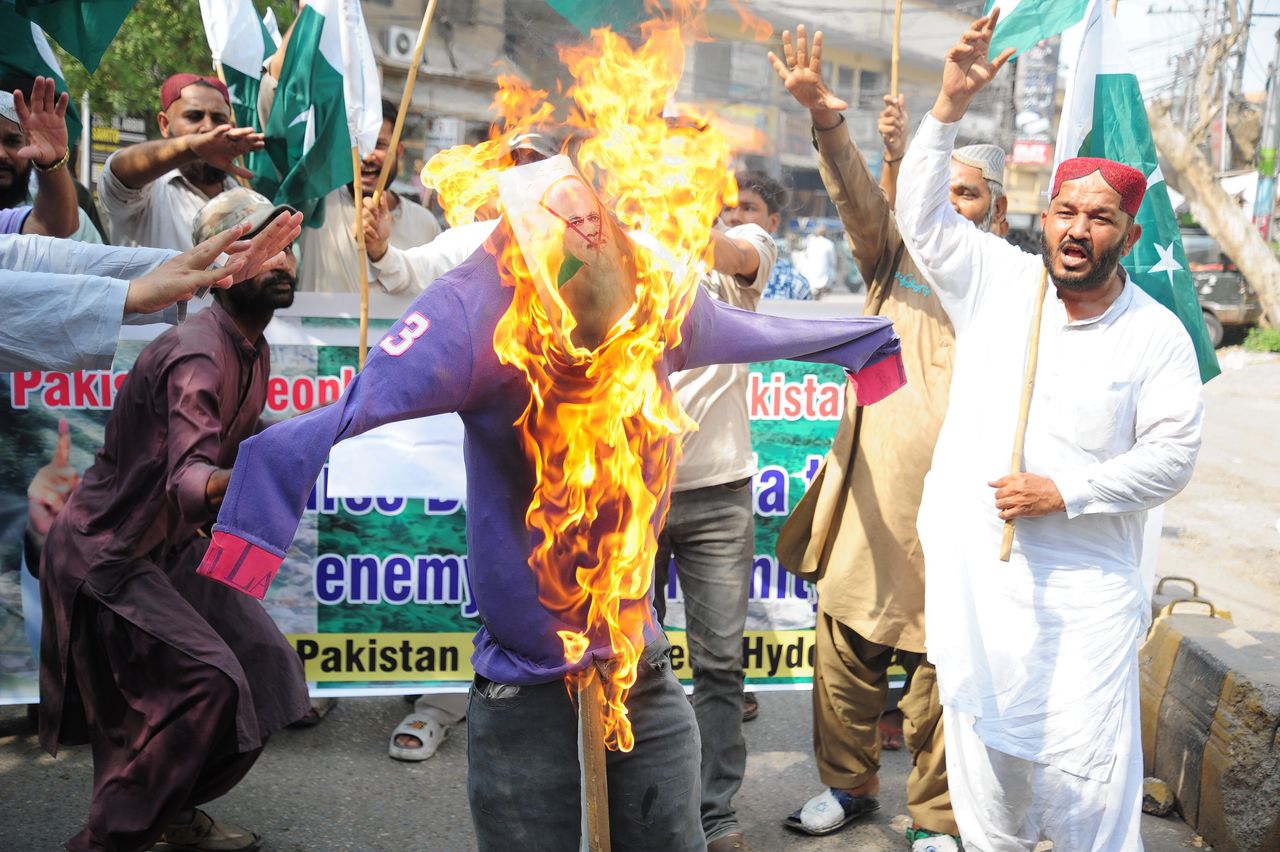Fear of further escalation of conflict between India and Pakistan

« Jai Hind! Jai Hind! » In the night from Tuesday to Wednesday, many Indian flocked the WhatsApp groups full of messages with that battle cry: « Lange Live India, » or « The victory to India ». Journals opened it and Indian politicians shared the cry on X, in support of the Indian armed forces, which carried out a series of attacks on Pakistani territory. According to the Pakistani authorities, at least 31 people were killed. The Indian Ministry of Defense states that in ‘Operation Sindoor’ rockets were fired on targets in the part of Kashmir and the Province Punjab. New Delhi labels the goals as « infrastructure used by terrorists ». It is the most serious military confrontation of India and Pakistan since 1999, feared for escalation of the conflict between the two nuclear powers.
In a press conference on Wednesday morning, a spokesperson for the Ministry of Foreign Affairs said that the military action had been carried out in the context of terrorist. Pakistan stated retribution in advance. On Wednesday there were firefights in the border area all day. On the Indian side, twelve civilians have fallen according to authorities, reports AP news agency.
The Indian attacks follow after two weeks of high tensions between neighboring countries, after a fatal attack in the part of Kashmir controlled by India. On April 22, 26 people were killed in the city of Pahalgam, mainly tourists. India holds Pakistan responsible for supporting and accommodating militants, Islamabad denies involvement.
The two countries have since punished each other back and forth: Diplomatic ties have been scaled up, trade across the border has stopped and India canceled the Visa from Pakistanen living there. Indian Prime Minister Narendra Modi also announced suspension of the Indus Water Sharing Convention. Islamabad warned that it sees that as a ‘war act’ – because of the suspension, Pakistan is without water from the Indus and tributaries, which is used for irrigation and hydroelectric power stations.
For the Indian Premier Modi, Kashmir is a pivot in his political agenda
Homogeneous state
In recent weeks, the ceasefire along the Line of controlthe file line between India and Pakistan that runs through the Kashmir region several times. Since independence in 1947, both countries have claimed the entire area and refer to the region as ‘occupied’ by the other state.
A military action by India was almost inevitably seen. For the Indian Premier Modi, Kashmir forms a pivot in his political agenda: he wants a more homogeneous, Hindu state. His government deprived the region, where the majority of the population is Muslim, the special status of limited autonomy and also had Indians buy from outside Kashmir Land, possibly a way to change the demography of the region. The attack in April was a blow to modes, which is advocated by the hard approach of terror.
Read also
Decades-old conflict between India and Pakistan flares up-why is that happening now?
Mosques
New Delhi always calls the attacks « non-escalating »-which is undoubtedly not seen by Pakistan. Given the size of the Indian action, that will be forced to be a military answer, says Syed Ali Zia Jaffery of the Center for Security, Strategy and Policy Research, which was established in the Pakistani city of Lahore. Although India has not hit military targets, it chose locations in Pakistani cities, where terrorist organizations or supporters would stop. It is striking that not only Pakistani Kashmir was bombarded, but also goals in cities in the Pakistani province of Punjab. That belongs to undisputed Pakistani territory. Jaffrey: « Suppose Pakistan does not respond now, it would essentially mean that Pakistan allowed India to carry out attacks on his territory, where civilian deaths fell. »
Thirteen people died in the attack on a mosque in Bahalwapur; A mosque was also hit in Muridke. Both buildings were once used by militant groups that are fighting for a ‘free Kashmir’ and which, according to Pakistani authorities, are now forbidden. Islamabad states that civil infrastructure has been hit, namely a hydroelectric power plant.
 Supporters of an Islamic party burn a photo of Indian Prime Minister Narendra Modi on the street in Hyderabad, Pakistan.
Supporters of an Islamic party burn a photo of Indian Prime Minister Narendra Modi on the street in Hyderabad, Pakistan. Many questions remain about the circumstances of the Indian attack. For example, it is unclear whether combat aircraft have been used, probably especially in the attacks in Punjab. The Pakistani army stated that it had shot several Indian combat aircraft and a drone. Those messages could not be verified on Wednesday; There was no confirmation of the Indian authorities. Also received from Islamabad NRC When inquiring, no clarification.
There were misinformation and propaganda. In the Pakistani national media, the mood was « aggressive, » a citizen said NRC. Jaffrey points out that in Pakistan, « as much as in India », internal political and social pressure plays a role in decisions about the military counter -action.
This Wednesday stood in all of India Civil drills Planned: exercises in preparation for a war scenario. In the meantime, the Pakistani National Security Council was considering a military answer.
More about the tensions between India and Pakistan Page 6-7

:format(webp)/s3/static.nrc.nl/wp-content/uploads/2025/05/07154553/data131882479-5ee17d.jpg)
:format(jpeg):fill(f8f8f8,true)/s3/static.nrc.nl/bvhw/wp-content/blogs.dir/114/files/2019/10/trujilo5bij3.png)

/s3/static.nrc.nl/images/gn4/stripped/data131886081-79ae39.jpg)




